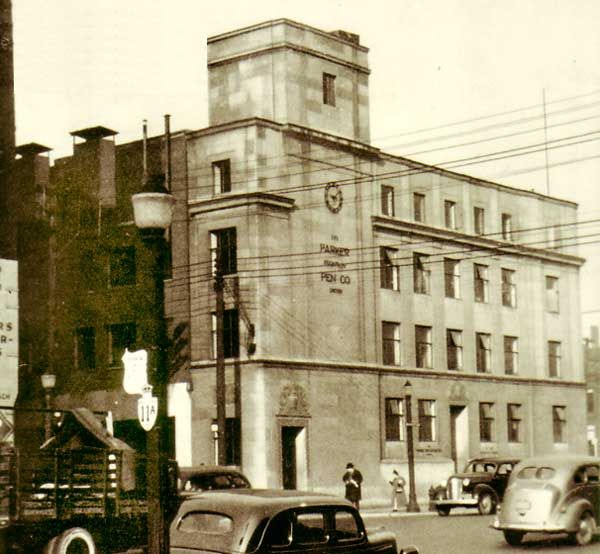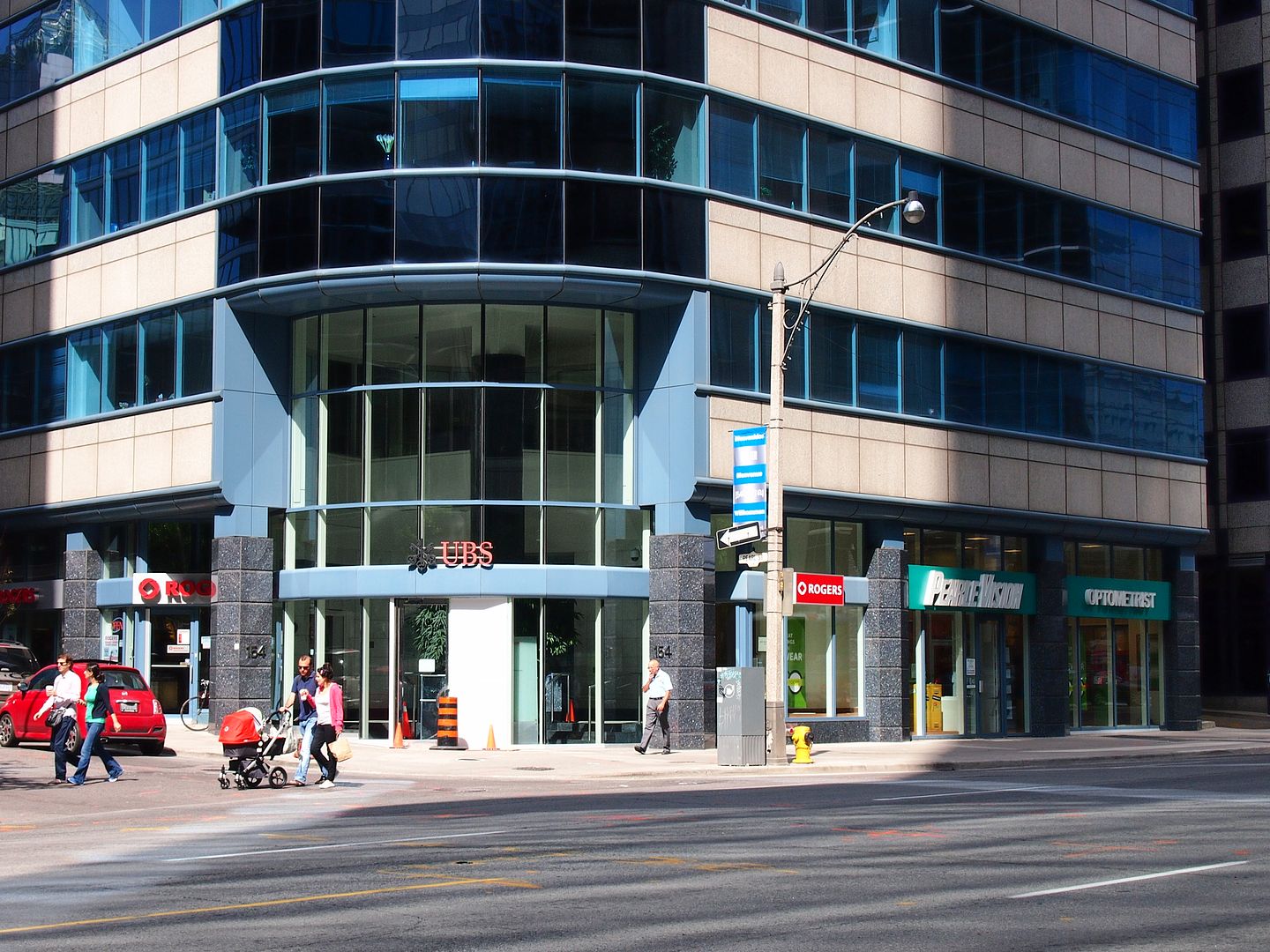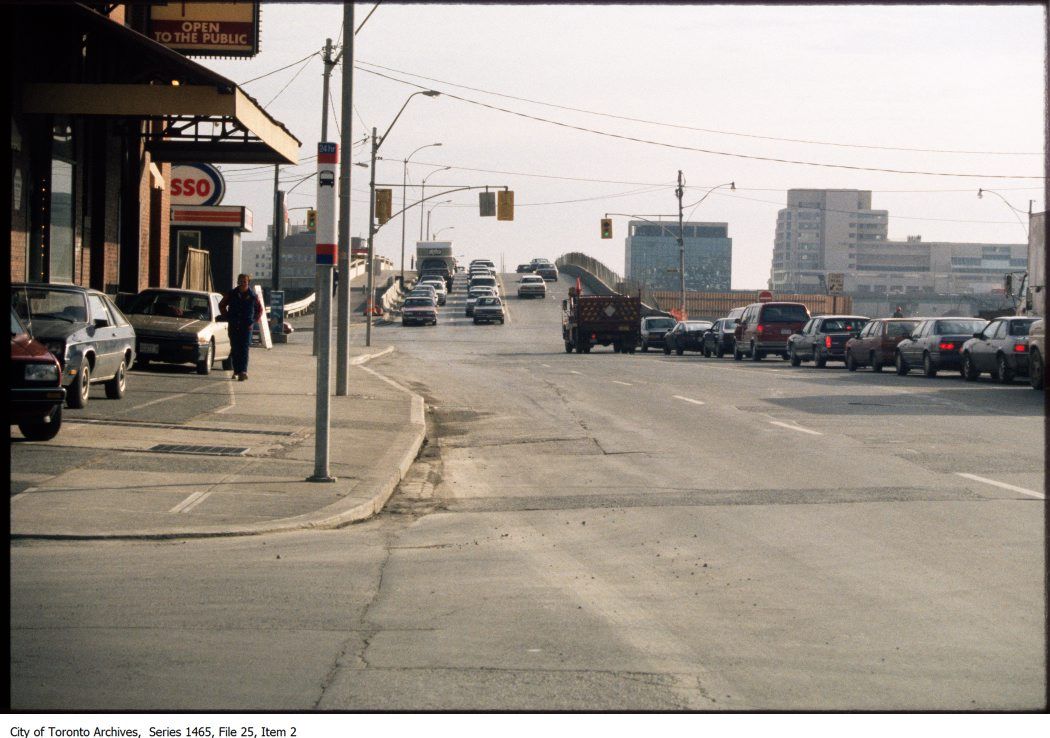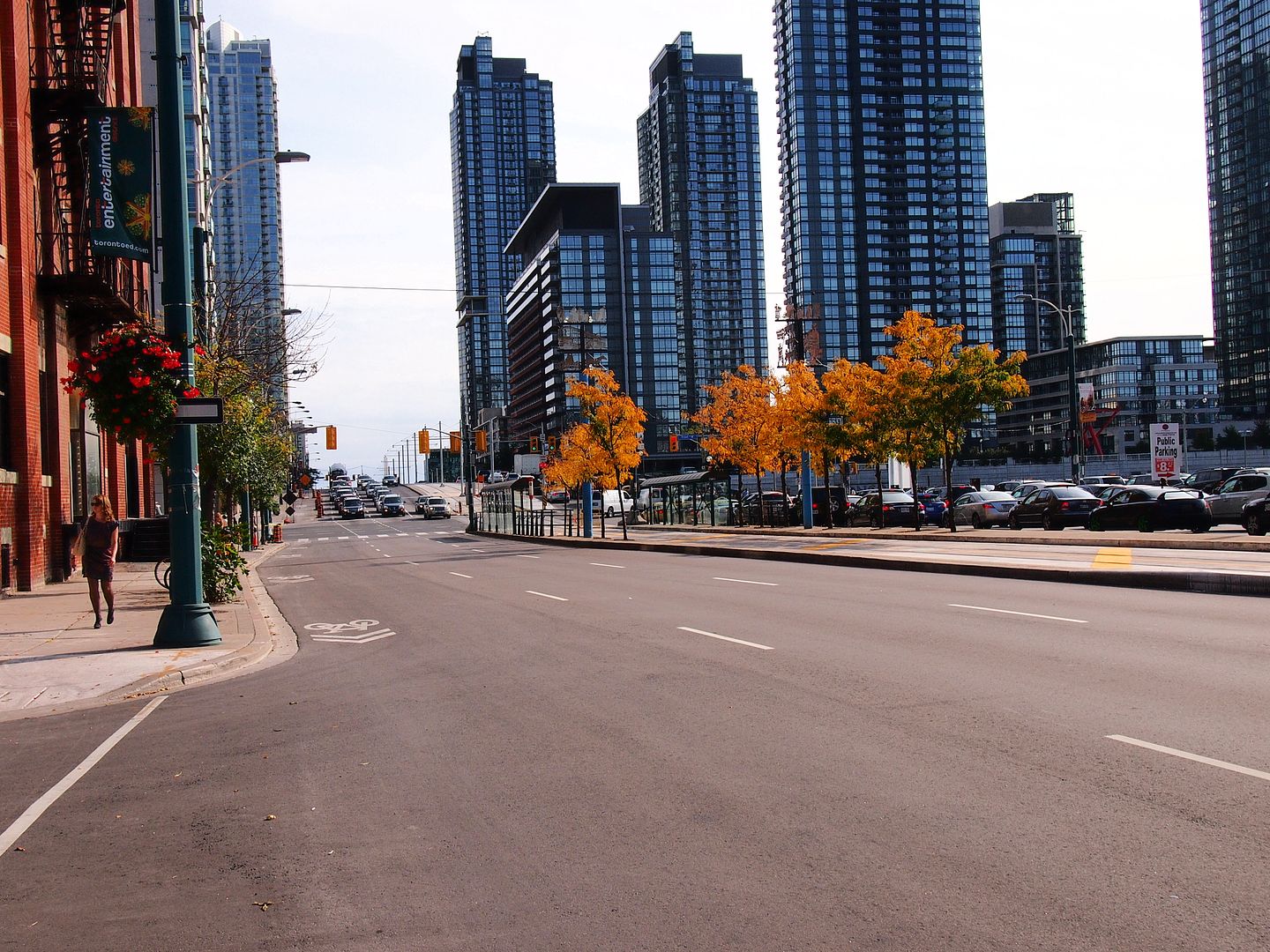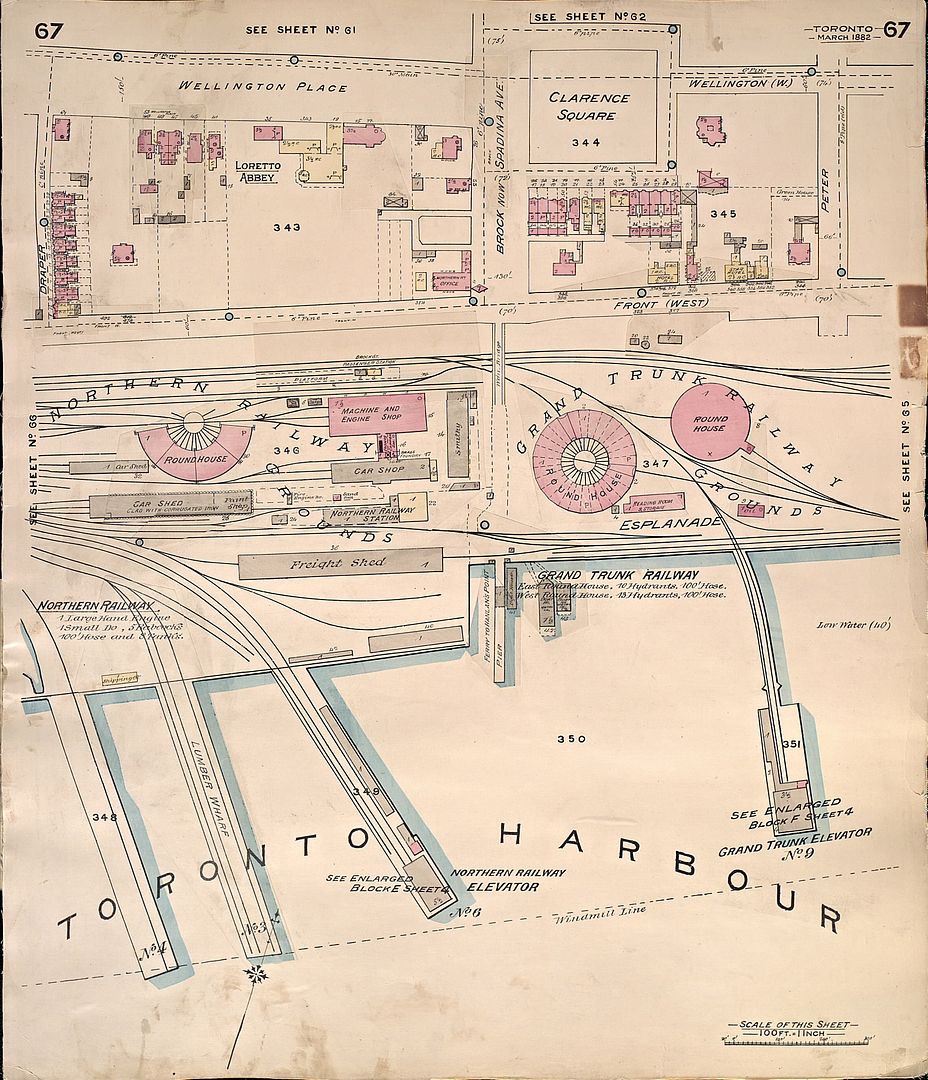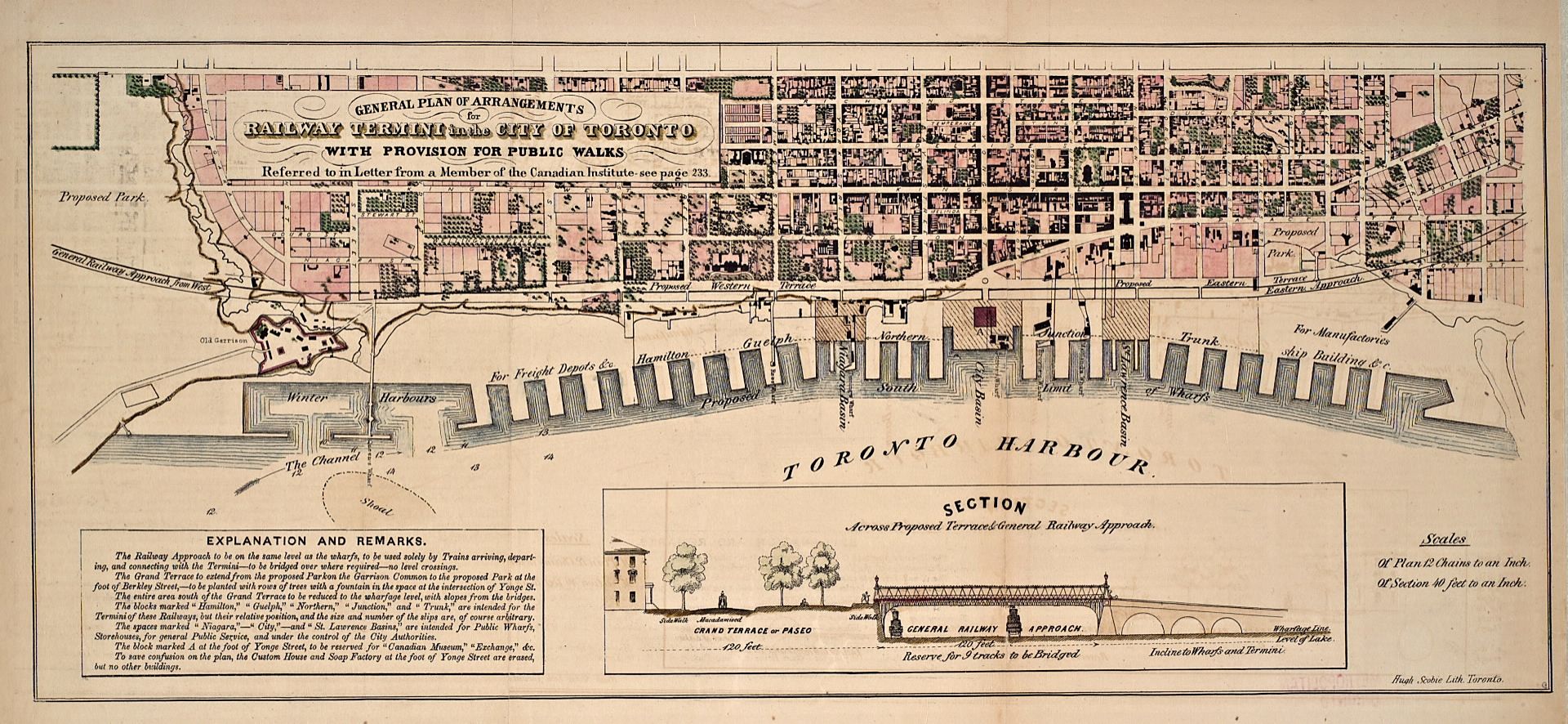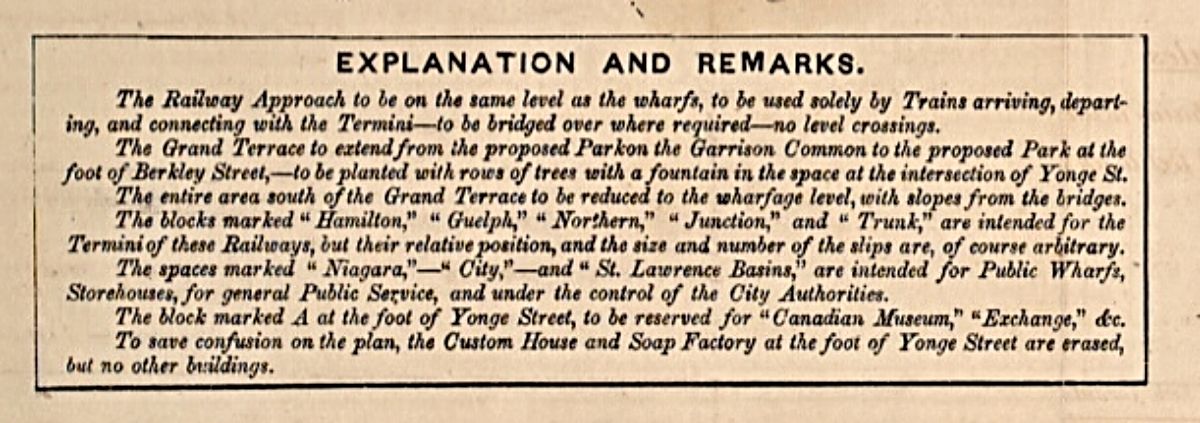Another creative and very well done [so well done in fact one of the best of this genre I've come across] Then and Now of the New York City area:
http://www.nyc-grid.com/home/tag/before-after
Then. 1935-ish, I'm guessing. Parker Pen Company. NW corner of University and Pearl. Parker moved here in 1932-ish.
Now. July 2013.
"By 1932 Duofold pens were being manufactured in Toronto and anticipating a success of the upcoming Vacumatic Parker decided that the space on Sorauren Avenue was too small. Parker bought and moved the production to a plant on 154-158 University Avenue. In time the factory in Canada would be shipping to 70 countries all over the world.
http://www.parkerpens.net/televisor.html






